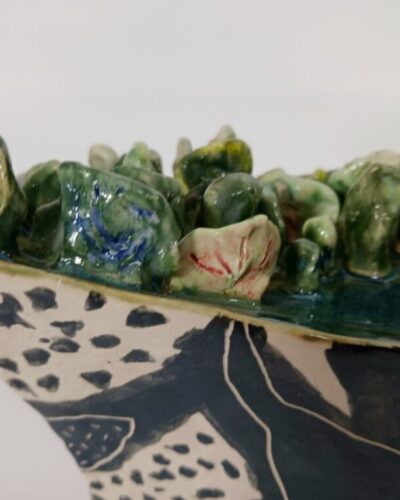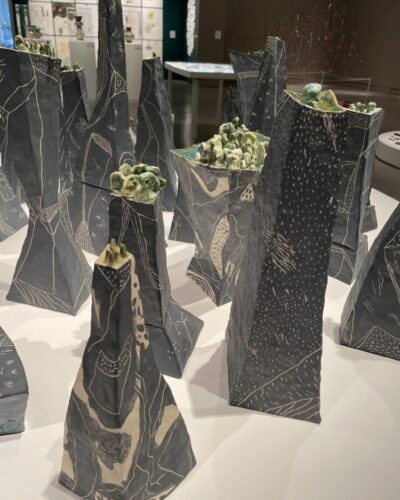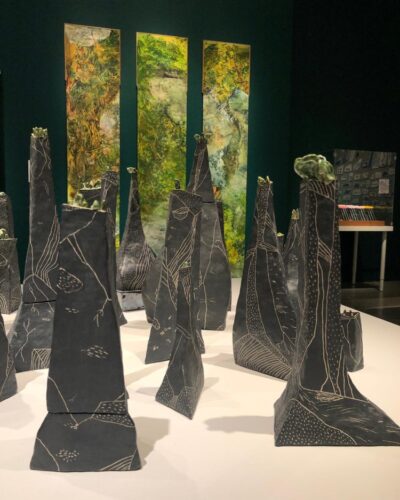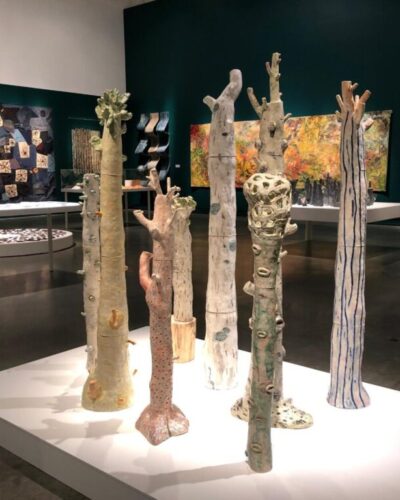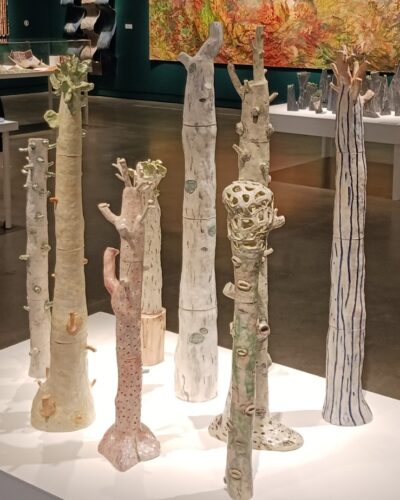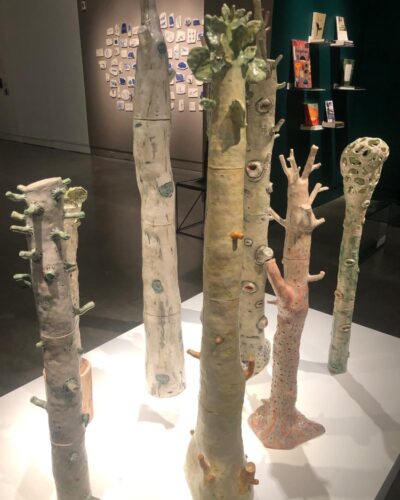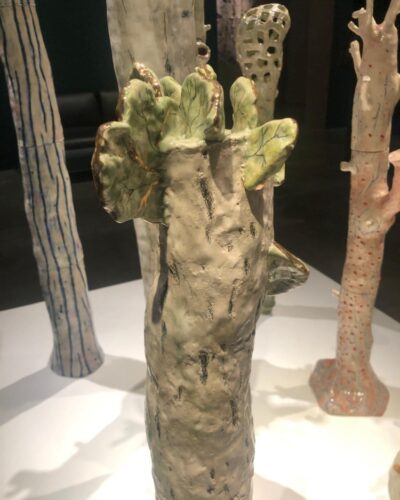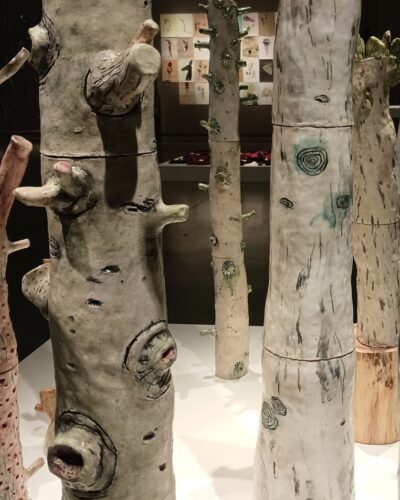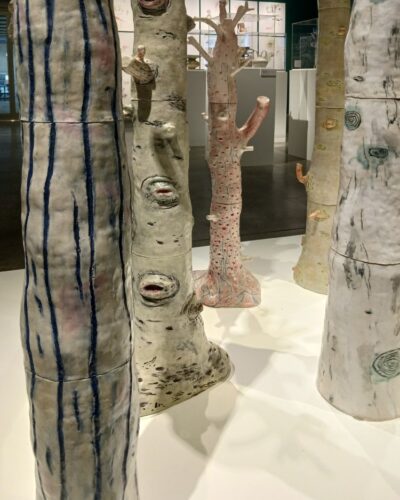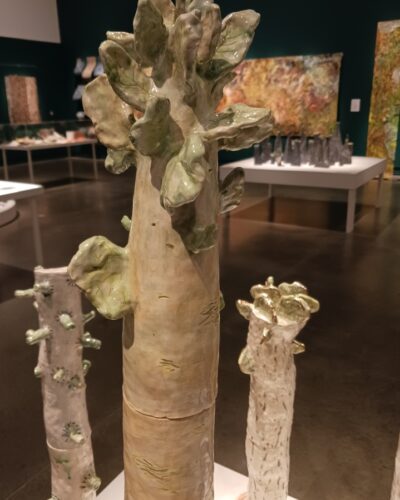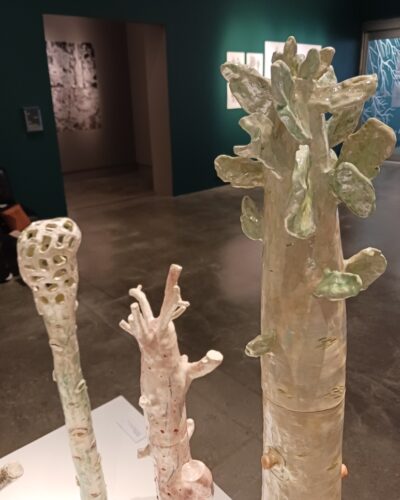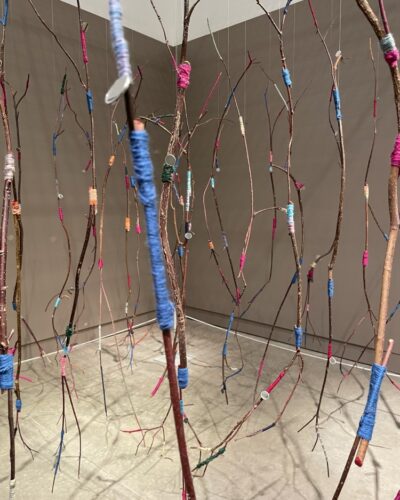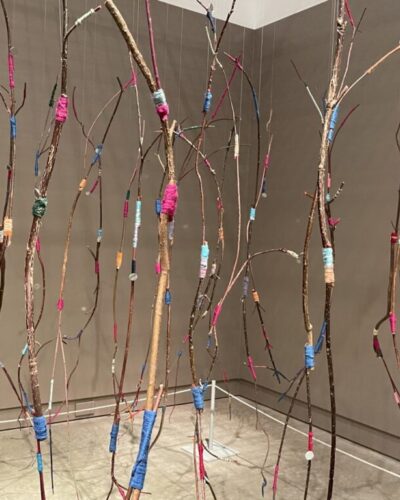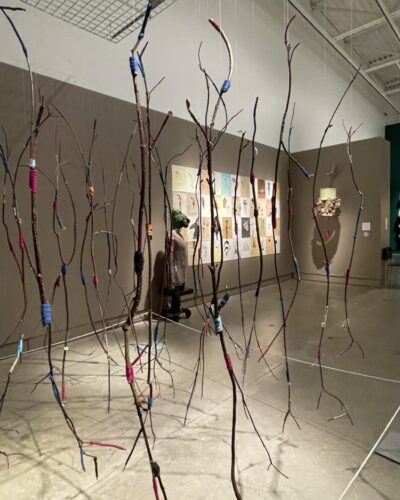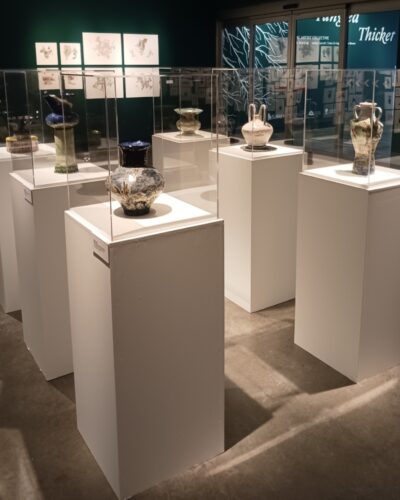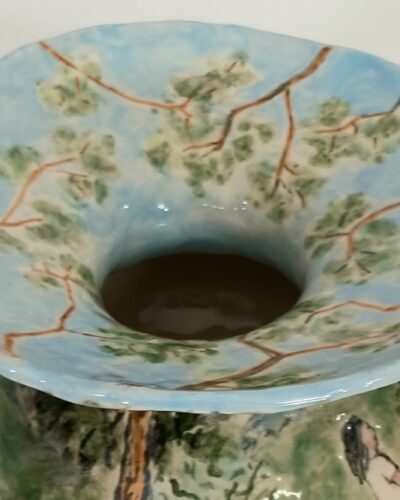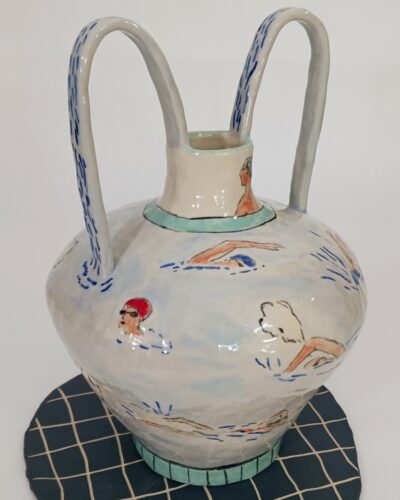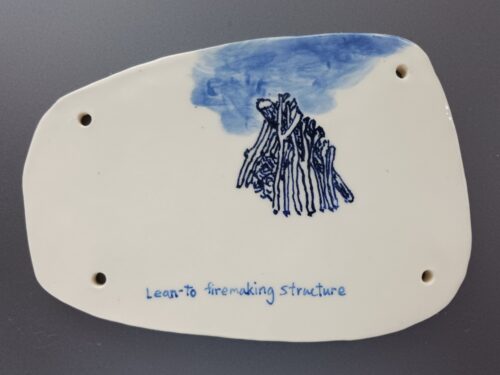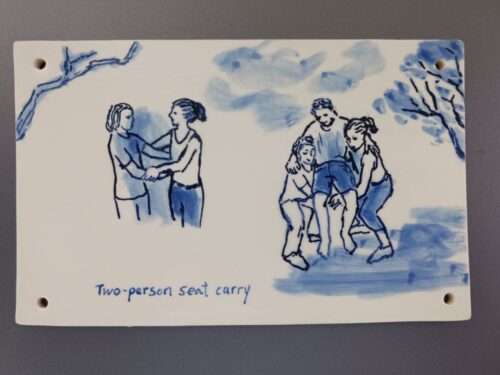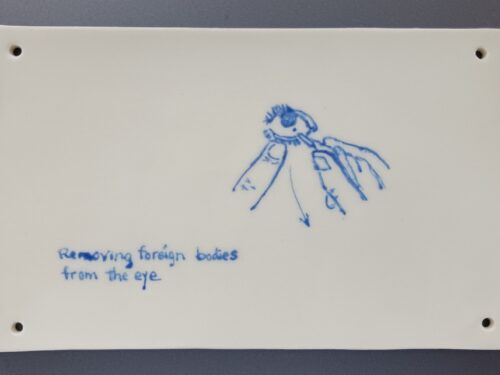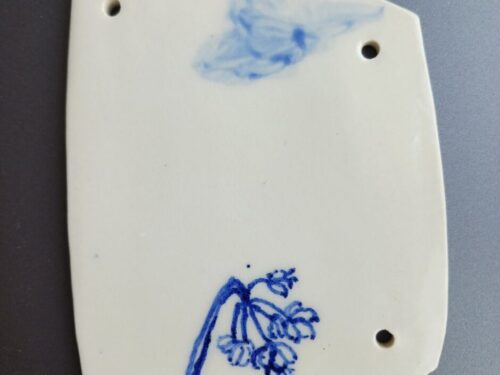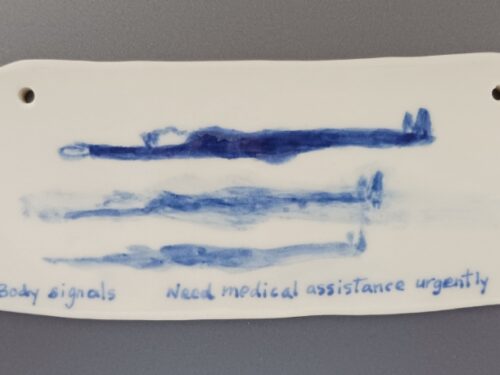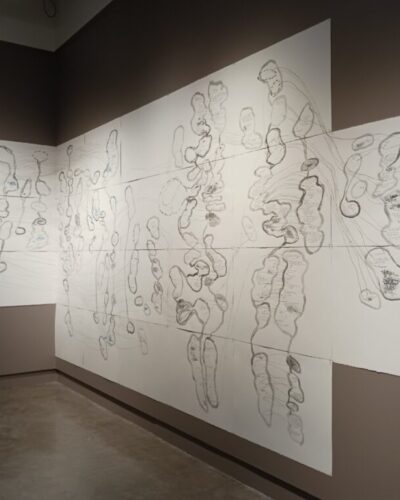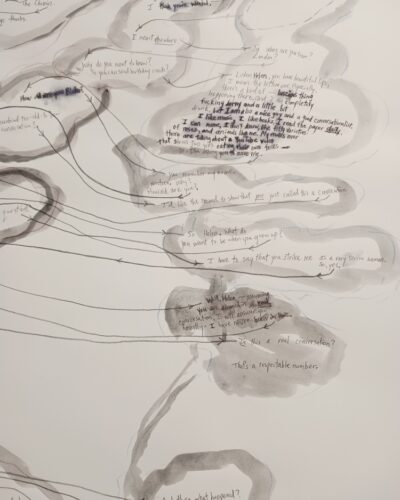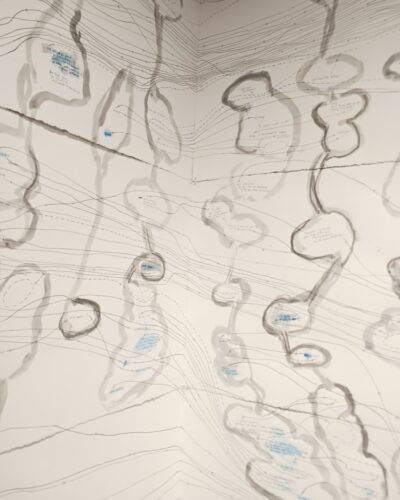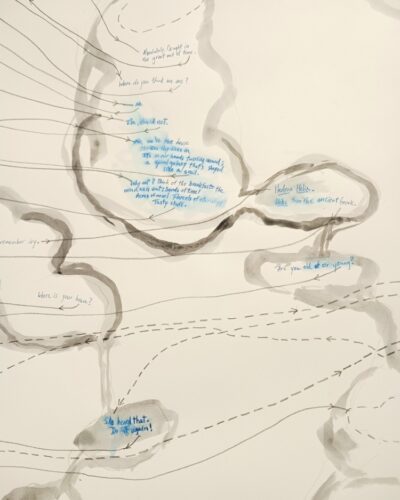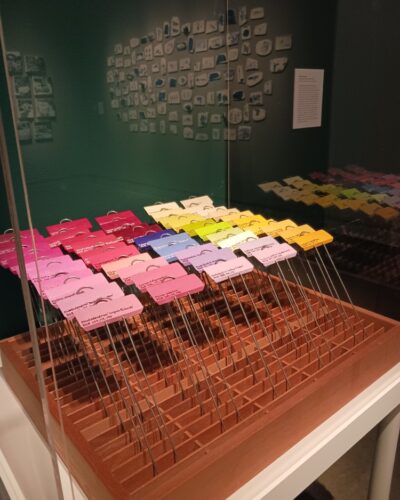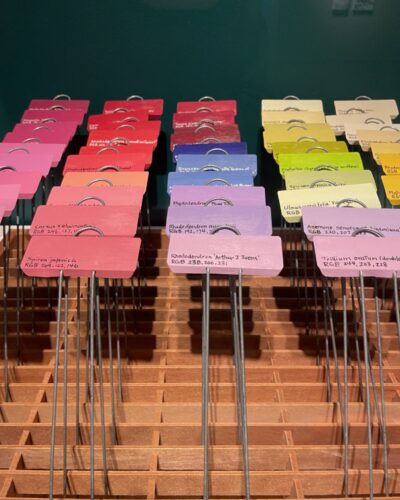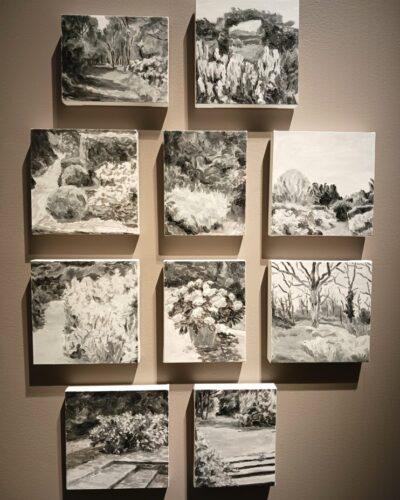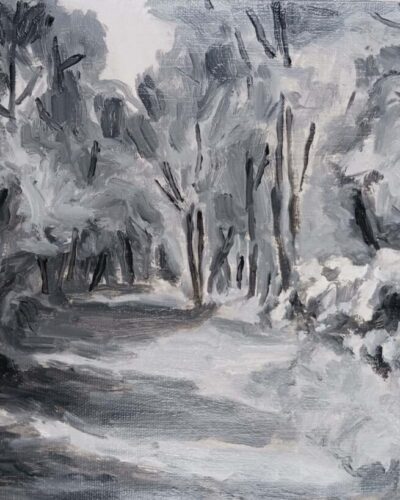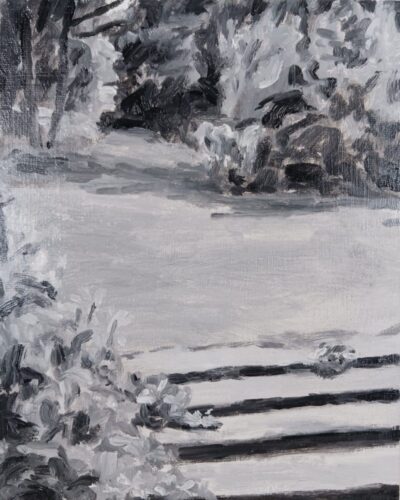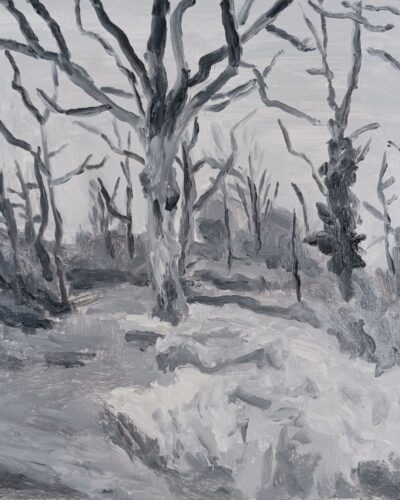
Rearranged Landscapes
A Tangled Thicket – Willa Downing
Artist Statement
I am passionate about art and science. While art and science both value observation by gathering information through the senses, they provide different maps with which to look at and participate in the world. Art’s approach is intuitive, visceral while science’s is more objective, evidence-based. My work often examines how science aims to understand the world e.g. by identifying patterns and systematically classifying them. I also explore the concept of complex systems – networks, in particular.
In network systems (e.g. social networks, the brain, the internet), interactions between elements are more important than the individual elements themselves in the emergence of new properties. Whether it’s a community of neurons or people, it’s from the dynamic interactions among the parts that new patterns, new stories emerge. Simultaneously, by participating in the whole, the parts themselves are changed.
I hope to create work that accommodates feelings and intellectual ideas, work that will enrich one’s perspective of our natural world and renew one’s sense of our place in it.
Rearranged Landscapes
Ceramic, various sizes, ~ 30 pieces
During the 2021 catastrophic floods in the BC interior, as inundated rivers washed away mountainsides and redirected river flow, a flood victim commented that the water has suddenly rearranged the landscape. The familiar has become strange.
Assembly of Departed Trees
Ceramic
This work is a contemplation on presence of the absent, inspired by a small stand of dead trees in Darts Hill Garden. The weathered lightness of their trunks, still identified with labels inserted in the ground, declared their presence in the green understory. And so, I create a panoply of the departed.
Connectome
Twigs, yarn, dental mirrors; 36 twig constructs
A connectome is a complete set or map of neural connections in the brain. Neurons not only transmit information, but they also constitute a complex system in which interconnectivity, rather than the activity of individual neurons, forms the basis of a powerful information processing system. These branching structures represent neurons that also resemble arteries, rivers and roots. The yarn represents the myelin sheath that insulates and protects neurons. Flashes of light reflected by the dental mirrors suggest firing of neurotransmitters at synapses.
“Connectome represents the complete set of neurons in someone’s brain. I used twigs, which are branching structures to represent the neurons, and they’re connected by yarn wrapped around pieces of twig to extend them. I also added dental mirrors, small mirrors that can reflect light, that remind me of the firing of neurons at a synapsis. The yarn represents insulation for neurons, which would be the myelin sheath. And I hang these structures in a grid-like formation from the ceiling with fishing line.”
– excerpt from an interview with Emma Jeffrey in STIR
Natural Histories and Personal Ecologies
Ceramic
I use ceramic vessels to celebrate the “everyday”, as records of living in this time and place, a “momento vivere”.
Wilderness Survival Skills
Ceramic tiles, various sizes, ~ 100 pieces
work is 4’ x ~10’
In Wilderness Survival Skills, I contemplate ‘wilderness’ and ‘survival’ in the context of climate change and environmental degradation. Today, with the ubiquitous presence of microplastics as only one example, the idea of ‘wilderness’ as untouched nature seems increasingly moot. The global effects of climate change only add to environmental destruction, leading to an existential crisis. Our current efforts to address these issues seem insufficient and inconsequential, like using the skills we learned as outdoor enthusiasts to survive in a totally degraded world, or like using a bandage to treat a multiple fracture.
The Space Between: The World Before Us
Dimensions: 7’4”h x 20’w. Only a portion of this work is shown in A Tangled Thicket.
Reminiscent of real-world networks, novels can embody social networks formed from the relationships among fictional characters. To explore this idea, this work visualizes relationships derived from dialogue in The World Before Us, a novel by Aislinn Hunter.
Conversations are copied from the story and organized according to character. Although the text is legible, the content is not as important as the act of verbal exchange. The flow of conversation is tracked by directional lines that emphasize the dynamic interpersonal relationships. Resembling concatenated speech balloons or clouds, the resulting organic forms are determined not only by the character’s words but also by the surrounding dialogue of others and the lines that link them. The shapes of these conversations and of the spaces between them co-determine each other. From the combination of shapes and lines describing these enmeshed interactions emerges something new.
photo courtesy of Pardeep Singh, Surrey Art Gallery
Horticultural Colour Chart
Metal plant labels, acrylic, wood rack
In Horticultural Colour Chart and Colour Schemes for the Flower Garden, I address the human tendency to order, name and classify as methods to understand the natural world.
Inspired by two volumes of Horticultural Colour Chart (1941) in Francisca Darts’ library and using the contemporary standardized Pantone colour system, I recorded the colours of dozens of plant species (flowers and leaves) in May 2023 at Darts Hill Garden. The colours were painted on plant labels similar to ones used for labeling plants at Darts, with scientific nomenclature for the species and RGB colour designations.
Colour Schemes for the Flower Garden
Oil on canvas, 10 b/w paintings 10”X10”, 10”x8” or 8”x10” each, unframed
These paintings are based on b/w images in Gertrude Jekyll’s Colour Schemes for the Flower Garden (1908) from Darts library. I find it amusing that a book about colour could only be printed in black and white.


